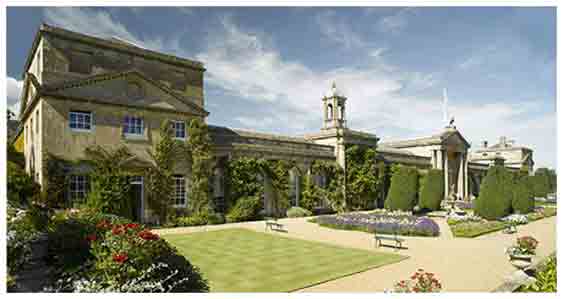1820-1821
The circumstances in which Amélina left her family in Paris to join the Feilding family in England in 1820 are obscure. The only clue we have to her earlier years is a later reference to “Mme Vigogne, to whom I owe the cultivation of my mind, my intelligence and my very feeble talents”. Can this be the Mme Vigogne who ran a school attended by the daughters of members of the Emperor Napoleon’s court?
The Feilding family consisted of Charles Feilding, a retired naval captain (and eventually a Rear-Admiral), his wife Lady Elisabeth, his stepson William Henry Fox Talbot, and his two daughters, Caroline and Horatia. It has been assumed that Amélina was originally engaged as governess to the two girls, but no lessons whether in music or in any of the other usual accomplishments are ever mentioned, and she seems from the outset to have lived as one of the family. William Henry Fox Talbot, the son from Lady Elisabeth’s first marriage, inherited Lacock Abbey in Wiltshire as an infant of six months when his father died in 1800. Later he became famous as the inventor of the calotype and the negative-positive method of photography, and he is now celebrated in the Fox Talbot Museum attached to the Abbey.

Lacock Abbey’s exterior - a mixture of architectural styles:
medieval Gothic, Renaissance and 18th century Gothic.
Charles Feilding was well-connected but Lady Elisabeth (‘Milady’) was the daughter of the second Earl of Ilchester, and many of her family lived in grand country houses: her sister Lady Lansdowne at Bowood, another sister Mary (married to another Talbot) at Penrice in Wales, her stepmother at Abbotsbury, and her half-brother (the third Earl) at Melbury.
Amélina was first introduced for a few weeks to the sights of London, where the trial of Queen Caroline was giving rise to noisy demonstrations in her favour, which followed them when they left for a round of country house visits.
“On the road the country people surrounded our carriage to make us shout ‘Long live the Queen’. We slept at Andover and we were assailed by an immense crowd of people who wanted the inn to be lit up; the landlord [was] quite a peaceable man, with the reputation of being opposed to the reformers, so all of a sudden stones began raining on the windows which they broke, coming into the sitting room where we were taking tea; we were overcome by fear.”
In a letter now in the Talbot correspondence, Lady Elisabeth writes to her son: “Mlle Amélina was in great astonishment tho’ she had often heard of the liberty of England, but would not believe it. She preserved a stone to shew in France, where they always imagine such things cannot be without a revolution.”
With a diversion for Amélina to see Stonehenge, they went on to visit the country houses of Lady Elisabeth’s sisters, aunt, and stepmother, including Melbury, Stinsford, Abbotsbury, and Bowood, where they arrived for Christmas. Here she met her first celebrity, Maria Edgeworth “with whom I had much conversation”. Miss Edgeworth does not record this in describing her visit to one of her sisters, but only comments on the Feildings: “Lady Elisabeth more affected than at Paris, and full of dress and Venetian bracelets etc.” and Mr Feilding “very gentleman-like and agreeable”.

Bowood House, Calne, Wiltshire, home of the Marquis of Lansdowne.
Back in London for several weeks, the entertainments included concerts, sightseeing, art collections, Covent Garden, and the British Museum, newly-founded in temporary premises, and unimpressive: “not well looked after, without order and in a mean smoke-blackened building, [with] very few objects of each kind”.
In February 1821 Henry Talbot reached his majority, and inherited the Lacock estate, but the Abbey was let on a lease, and the Feildings were obliged to spend the next six years in London (in Mr Feilding’s house at 31 Sackville Street), or travelling, until they were at last able to take possession of it in August 1827.
